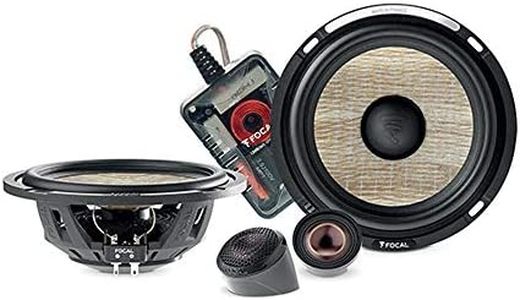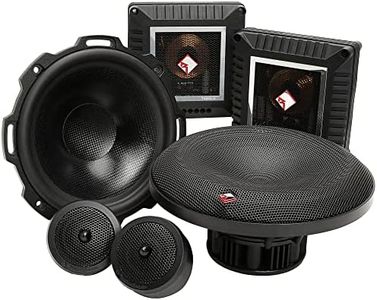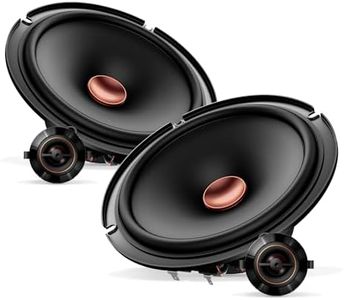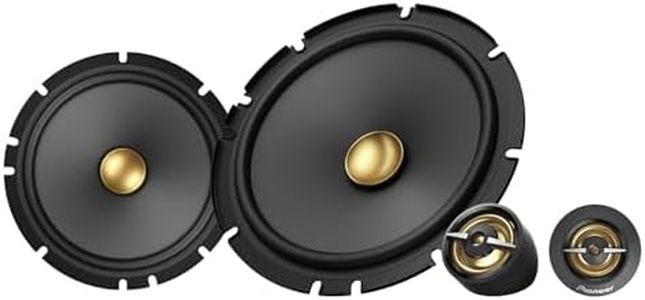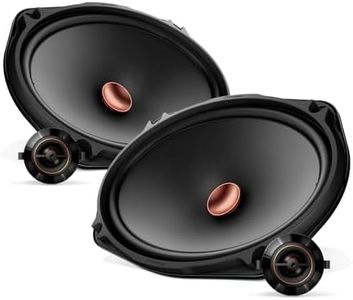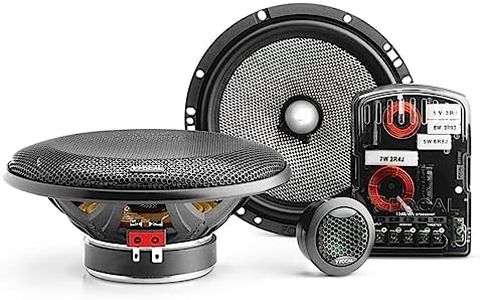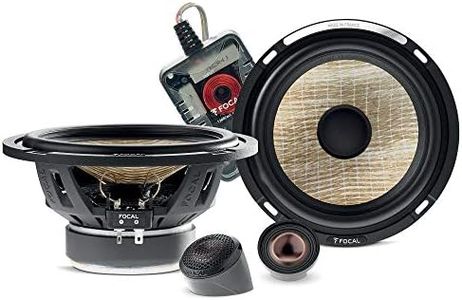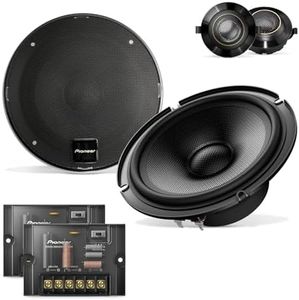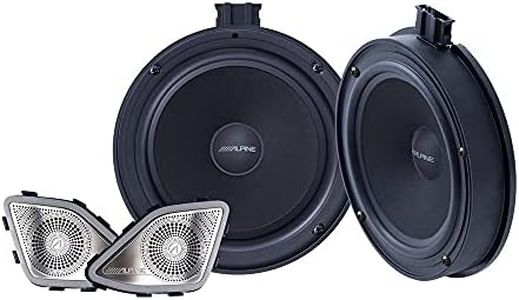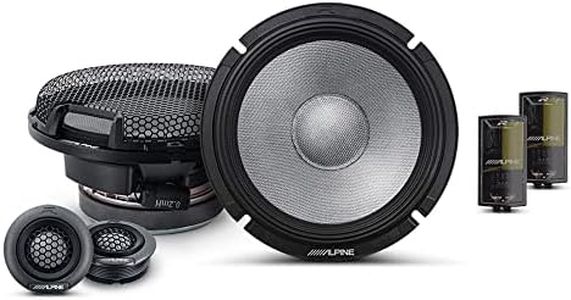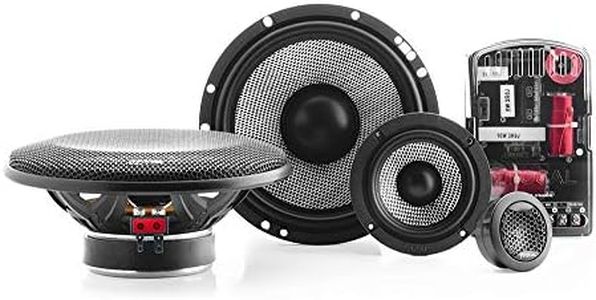We Use CookiesWe use cookies to enhance the security, performance,
functionality and for analytical and promotional activities. By continuing to browse this site you
are agreeing to our privacy policy
10 Best Component Speakers
From leading brands and best sellers available on the web.Buying Guide for the Best Component Speakers
Choosing the right component speakers can transform your listening experience by delivering rich, clear, and immersive sound. Component speakers come in separate pieces, often including woofers, tweeters, and crossovers, so you can position each part for optimal sound reproduction. When shopping for these speakers, it’s important to look at more than just the brand—understanding key specs will help you select a set that matches your car, your sound preferences, and how you listen to music.Speaker SizeSpeaker size refers to the diameter of the woofers and tweeters in the component set. This is important because it affects both how the speakers fit in your vehicle and how they sound. Bigger speakers typically provide deeper bass and more powerful sound, while smaller ones are easier to fit into tight spaces and often produce cleaner mids and highs. To navigate sizes, you'll often find common measurements like 6.5-inch or 5.25-inch woofers; check your car's compatibility before choosing. If you want strong bass and your car has room, go for larger sizes; if you’re limited on space, smaller speakers may be more suitable, focusing on midrange and high frequencies.
Power Handling (RMS and Peak)Power handling tells you how much power (measured in watts) the speakers can handle safely without distortion or damage. Two values are important: RMS (continuous power) reflects what the speaker can handle for long periods, while peak power is the maximum for short bursts. Higher power ratings mean the speakers can play louder and clearer, but only if your amplifier or head unit can match that output. If you're using a basic system, lower wattage (say, 30-60W RMS) is enough; for more powerful setups with an external amp, consider speakers that handle higher RMS values (over 75W). Pick based on how loud you like your music and what your car audio system can support.
SensitivitySensitivity measures how effectively speakers convert power into sound, expressed in decibels (dB). This is key to determining how loud your speakers will be for a given amount of power. Lower sensitivity numbers mean the speakers need more power to reach the same volume, while higher numbers mean they play louder with less power. Sensitivity is usually grouped as low (below 87dB), average (87-90dB), and high (above 90dB). If your system has a lower-powered head unit, look for higher sensitivity (over 90dB); if you have a big amplifier, you have more flexibility.
Frequency ResponseFrequency response shows the range of sounds the speakers can produce, from the lowest bass to the highest highs, measured in hertz (Hz). A wider frequency range suggests the speaker can handle more detailed audio, but real-world performance also depends on design. You’ll see values like 40Hz-22kHz; the first number tells you how deep the bass goes, the second how high the treble reaches. For most people, anything covering around 50Hz to 20kHz is enough for full music enjoyment. If bass is most important, look for a lower first number; for crisp vocals and cymbals, focus on the upper end.
Crossover TypeA crossover is a component that directs the right frequencies to the right speaker parts, so bass goes to woofers and treble to tweeters. There are passive crossovers (included in most kits) and active ones (separate and adjustable). A good crossover ensures your music sounds clear, not muddy. Most users will stick with passive crossovers, which work well out-of-the-box; active crossovers offer more tuning but require extra setup and gear. Choose passive if you want simplicity and active if you’re an enthusiast who wants to fine-tune sound.
Build MaterialsBuild materials refer to what the speaker cones, surrounds, and tweeters are made from. Materials like polypropylene for cones, silk for tweeters, or rubber surrounds affect sound quality and durability. Sturdier materials last longer and can handle changes in temperature and humidity better, which is important in cars. Softer materials often produce warmer, smoother sound, while harder materials tend to make sound brighter and clearer. Pick the type that matches your taste in music: warmer materials for a laid-back, natural vibe; brighter ones for detail and punch.
